Heritage Buildings To Visit In New South Wales & Sydney
New South Wales is home to some of Australia’s most iconic heritage buildings. From Sydney’s majestic colonial sandstone edifices to the grand 19th-century mansions scattered throughout the state, New South Wales offers a treasure trove of historic architecture for visitors to explore.
Many of these heritage sites provide a window into the past, showcasing the lives and times of early Australian settlers.
Their ornate facades and opulent interiors reflect the optimism and ambition of a growing colony seeking to establish its own identity in the late 18th and 19th centuries.
From Sydney’s sandstone government buildings to opulent 19th-century country manors, here are 5 impressive heritage sites to see in New South Wales.
Table of Contents
Toggle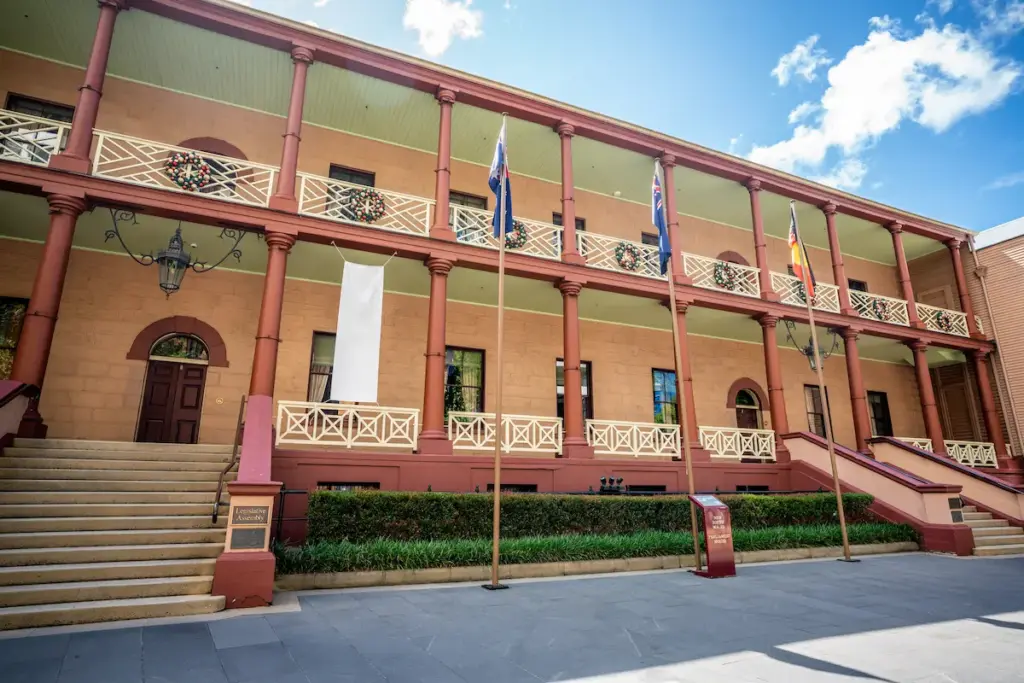
Sydney Customs House
Sitting majestically on the edge of Circular Quay, Sydney Customs House has been a waterfront landmark since 1844. Ships have been docking here to clear customs before unloading goods and passengers since the earliest colonial days.
Constructed from local Sydney sandstone, Customs House was designed in a classical Georgian style by architects Mortimer Lewis and Alexander Dawson.
The building’s imposing colonnaded portico facing the harbour was added in an 1866 extension. Customs operations relocated from the bustling quayside location in 1990 after almost 150 years.
This allowed restoration efforts to convert the buildings into cultural and exhibition spaces. Sydney Customs House now showcases performing arts, hosts events and displays rotating exhibits.
Visitors can admire the landmark Long Room, an elegant space bathed in light from long rectangular windows. Ornate plasterwork decorates the 30-metre length of this grand room, which was once filled with customs officers’ desks.
Guided tours run daily, exploring spaces like the bond store basement and former customs officers’ quarters.
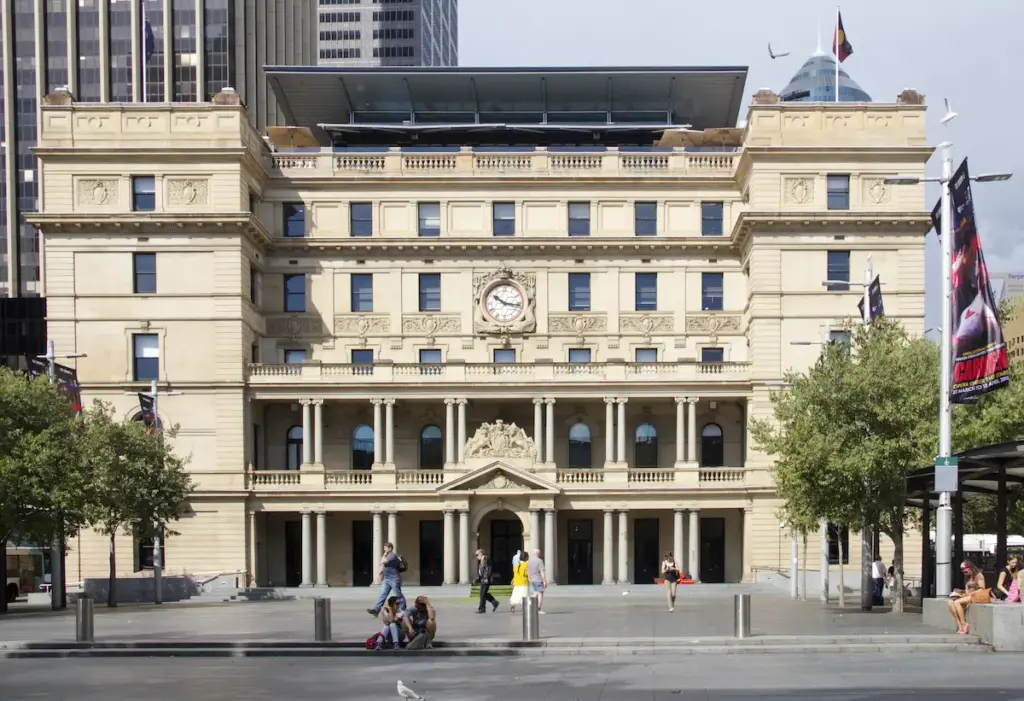
Vaucluse House
Nestled in the exclusive enclave of Vaucluse on the South Head peninsula just outside Sydney lies a 19th-century Gothic Revival mansion.
Vaucluse House was built as the harbourside residence of Australian pioneer William Charles Wentworth and gradually expanded between 1805 and 1829.
Wentworth grew his original single-storey cottage into an impressive estate, adding a two-storey Gothic wing designed by John Verge in the 1830s.
The house is surrounded by formal gardens dotted with palm trees and commands views across Sydney Harbour. Rooms are furnished with many original pieces owned by the Wentworth family, including fine antique furniture from the colonial era.
The austere interiors reflect the Gothic style, with stark whitewashed walls, dark timbers and decorative flourishes like arched stained glass windows.
Don’t miss the chance to have tea on the lawn, served from the house’s tiny historic tearoom. The tearoom was originally an external kitchen building and allowed catering for events without compromising the home’s heritage interiors. This beautiful building was built with only the best building supplies and presents meticulously.
Vaucluse House offers an intimate look into how the colonial gentry lived just a short boat ride from the bustle of Sydney Cove.
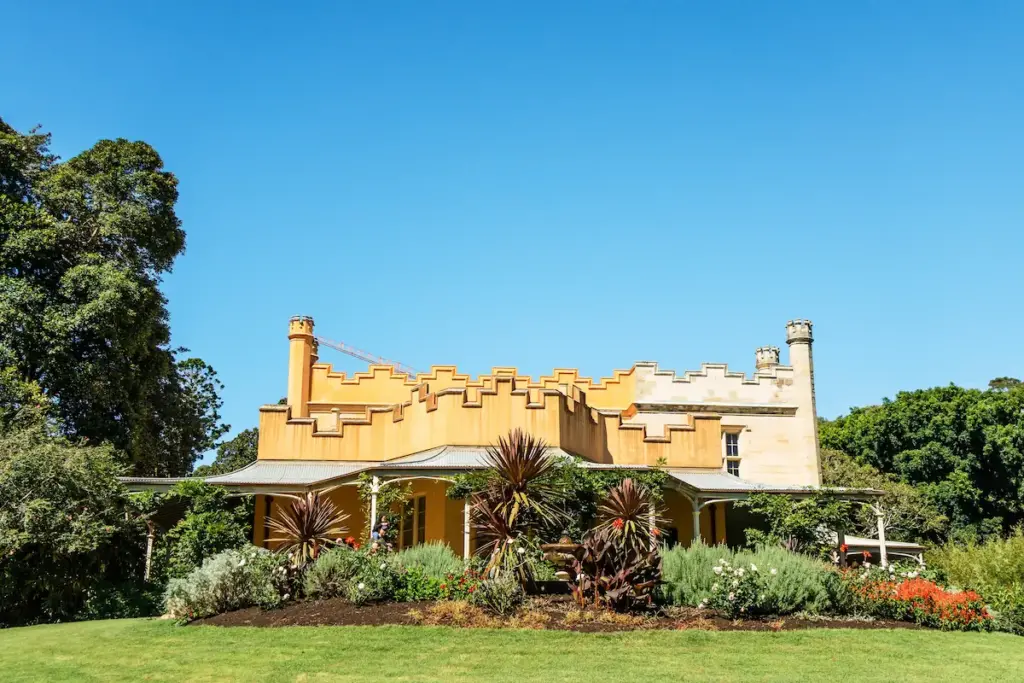
Grossmann House
The regional town of Maitland in the Hunter Valley is home to an extraordinary Victorian Italianate mansion, considered the ‘jewel of Maitland’. Grossmann House was built in 1886 as the grand residence of prominent local businessman Carl August Grossmann.
The prosperous proprietor of a bacon factory, butcher and bakery, Grossmann commissioned architect J.W. Pender to design his elaborate townhouse.
Pender created an ornate two-storey masterpiece, integrating cast iron lacework, marble fireplaces and intricate parquetry floors. The symmetrical façade is topped with an elaborate parapet and features a porch with Ionic columns set off in striking green and cream tones.
Throughout the interior, decorative plasterwork borders the high ceilings, while Crows Ash timber lines the fine joinery. Saved from demolition in the 1970s, today, Grossmann House is managed by the National Trust.
Visitors can appreciate Grossmann’s opulent lifestyle through self-guided audio tours of the mansion’s interiors and shady gardens. The Italianate villa hosts tours, dinners, weddings and events within its restored heritage interiors.
Hill End Courthouse
In the 1860s gold rush, the courthouse at Hill End heard an average of 90 cases every month. This small town in rural NSW was once home to over 20,000 prospectors hoping to strike it rich.
As patrons of the 100 or so local pubs fell foul of the law, the Hill End Courthouse dispensed swift justice.
Designed by prolific government architect James Barnet, the courthouse was constructed in 1872 from locally quarried sandstone.
It occupies a commanding position on the hillside above the town. Bushrangers such as Ben Hall and Frank Gardiner were among those sentenced here during gold rush times.
One of the few surviving civic buildings from that frenetic era, today, the restored courthouse allows visitors a glimpse into colonial justice. The austere courtroom, judge’s chambers and holding cells with their heavy iron doors have all been preserved.
Re-enactments bring the history to life, along with displays of constabulary artefacts and early photos of Hill End in its gold rush prime.
University of Sydney
Founded in 1850, the University of Sydney campus contains some of Australia’s finest examples of Victorian Gothic revivalist architecture. The first university in the colony, its early chancellor decreed the buildings must rival the great universities of Europe.
A succession of architects, including Edmund Blacket, oversaw the construction of the sandstone buildings between 1854 and 1874.
Soaring buttresses, pinnacles and arches create a stately collegiate atmosphere, albeit with an Antipodean creative twist. The cloisters of the Quadrangle resemble Oxford, while the taller, more embellished interiors reference the more elaborate Perpendicular Gothic style.
The sandstone interiors feature vaulted timber roofs, grand halls and stained glass adornments. Beyond the Quadrangle with its Jacaranda-shaded lawns lies the imposing Great Hall.
This soaring space with hammer-beam ceiling trusses hosts many of the university’s ceremonial occasions.
Self-guided walking tours allow visitors access to the Quadrangle, Great Hall, Holme Building and Macleay Museum without entering active teaching areas. Special access tours can be booked to explore the campus heritage more intimately.
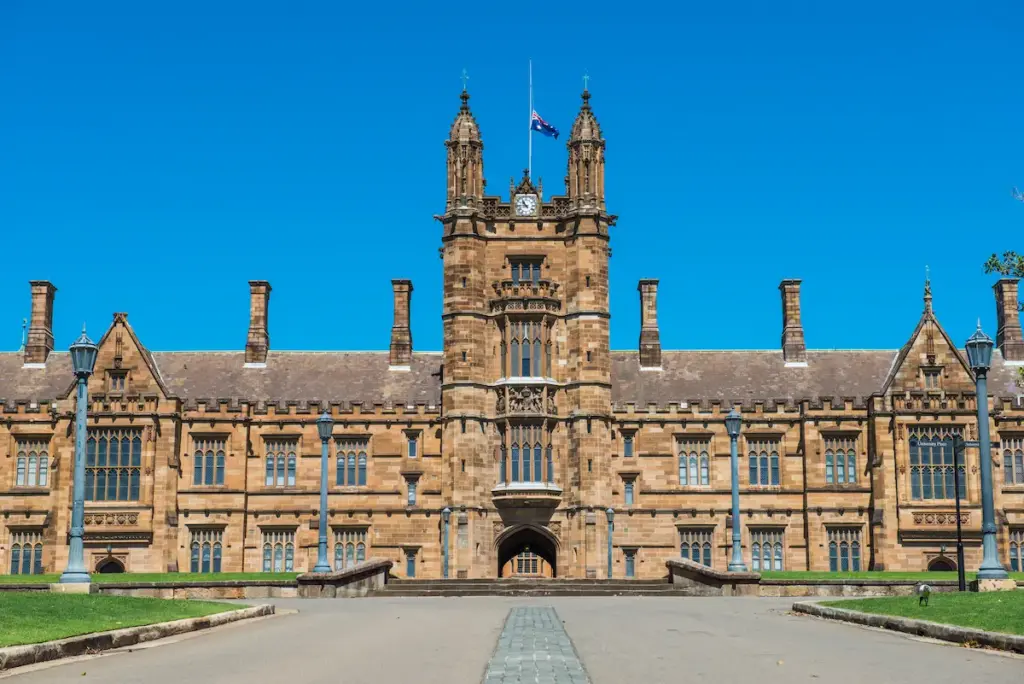
Elizabeth Bay House
While most of Sydney’s earliest architecture has long been demolished, Elizabeth Bay House provides a rare insight into the homes of the colonial gentry.
Built between 1835 to 1839, this Regency-style mansion was designed by architect John Verge for wealthy merchant Alexander Macleay.
The two-storey house features symmetrical wings extending from a colonnaded central portico. A grand entrance hall welcomes guests with a cantilevered staircase and soaring skylight dome. Elizabeth Bay House was, at the time, one of the grandest private residences in the colony.
Its expansive drawing rooms open onto wide verandahs overlooking lush gardens. Macleay filled his home with fine furniture, art, and objects d’art from his family’s estate in Scotland.
These provide an intimate portrait of the tastes of educated early settlers. Elizabeth Bay House is now managed by Sydney Living Museums. Knowledgeable guides bring the history to life on tours of the villa and gardens.
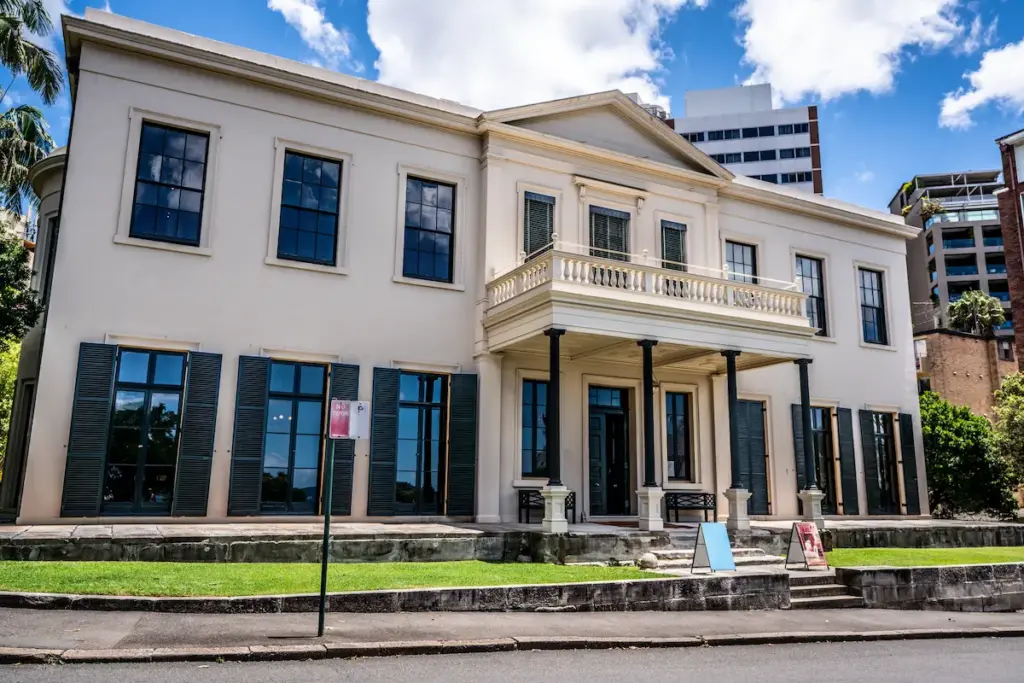
Conclusion
Each of these five heritage sites provides a snapshot of architecture and life in New South Wales from colonial days onwards. Their heritage fabric allows visitors to step back in time through restoration and preservation.
From the UNESCO World Heritage Sites of the Sydney Opera House and Hyde Park Barracks to opulent 19th-century mansions and grand public edifices, New South Wales’ built heritage is both nationally significant and visually stunning.
NSW’s diverse history comes to life from the bustling Sydney harbourside to country courthouses and stately universities. While numerous historic colonial buildings have been lost, these five icons have been protected for future generations.